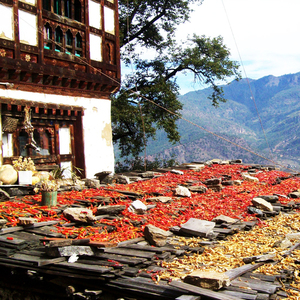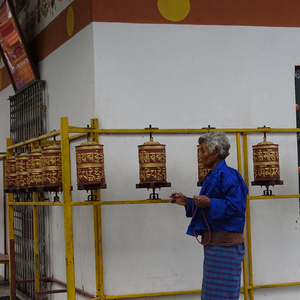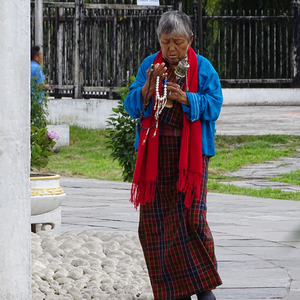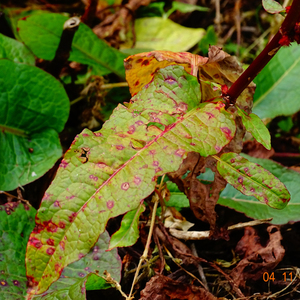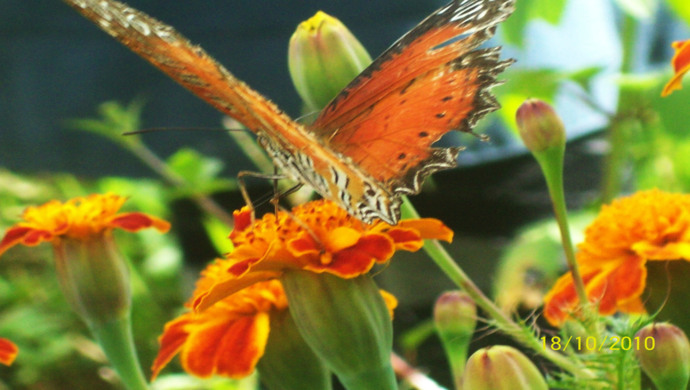
Bhutan through the lenses
The "Land of the Thunder Dragon" is one of the last remaining strongholds of Tantric Mahayana Buddhism and its rich cultural heritage is visible in the white-walled Dzongs with their communities of studying monks, the decor of people’s homes and the ornately painted wall motifs. Bhutan's scenery is magnificent; monasteries hang over precipitous drops, often wreathed in mist, and there are pristine forests, fertile valleys, and high rugged mountain passes - all of which make Bhutan an exhilarating destination. Bhutan is a visually spectacular and intimately beautiful place. You can photograph the captivating landscapes, age old monasteries standing tall since ages, people walking in the streets in traditional attires, monks praying and so on. The list is endless. As a photographer you will find continuous images to captivate you.
Brief Description of Cities covered in this tour
Thimphu: Capital and the largest city of Bhutan - Only capital city in the world that does not have traffic lights - Main center of Commerce, Religion and Government in the country - Most modern city of Bhutan and has abundance of restaurants, internet cafes, nightclubs and shopping center. It is one of the few cities of Bhutan having ATM facilities.
Paro: Small town in the western part of Bhutan - Also home to Paro Airport, Bhutan’s only International Airport - The valley has many isolated small villages and is known for red rice - Also home to most of Bhutan’s oldest temples and monasteries.
Punakha and Wangdue: Punakha and Wangdue is located in the same valley. These two places are located within a distance of 13 km. Punakha was the capital of Bhutan and the seat of government until 1955 - The valley is fed by the Pho Chhu and the Mo Chhu rivers - It is one of very few places in Bhutan which offers Rafting facilities - It is the winter seat of the Je Khenpo (Chief Abbot) and the monk body at present.
Gangtey/Phobjikha: The famous Phobjikha Valley is located in Wangdue district, 68 km away from the Wangdue valley- Phobjikha is the winter roosting place for endangered black necked crane and the valley is considered one of the most beautiful glacial valleys in the Himalayas.
- Visit old Monasteries and majestic fortresses.
- Explore a capital city with no traffic lights.
- Feast on Ema Datsi and Red Rice, two of the most popular dishes of Bhutan.
- First-hand experience of untouched Nature and unique Culture.
- Experience the Sacred Spirituality and see the Prayer flags fluttering in the wind.
- Village houses and rural life.
- Shop for Silks, Souvenirs and More.
- Marvel at structures adorned with Phallus paintings.
- Hike through pine forests to visit “Tiger’s Nest”
- Capture images of skilled local artisans and weavers at work.
- Photograph the rich diversity of Bhutanese life on hikes through the local countryside and on visits to local homes and farms.
- Beautiful landscapes and spectacular Himalayan scenery.
- The must visit Dochula Pass and the Druk Wangyal Chhortens.
- Visit Phobjika, the most beautiful glacial valley of Bhutan.
- Endangered Black-necked Cranes in Phobjikha Valley (only in winter months).
Day 1. Paro - Thimphu:
Driving Distance: 65 Kms, Driving time: 1.50 hrs – 2 hrs., Altitude of Thimphu: 2,350 m
Your flight to Paro on a clear day, is marked with the panoramic views of the Himalayas including the Everest and other famous Peaks. The approach through the foothills and the landing (including few steep turns) at the tiny airstrip of Paro has been termed as adventurous by many travelers. After the completion of immigration formalities at the Paro Airport exit door, you will be received by your Bhutanese guide with traditional “Tashi Khadar”. Afterwards drive to Thimphu following the Pa Chhu (River). Check-In to the hotel. Later, we hit the streets of only capital city with no traffic lights and visit places like:
- Main Traffic, located in Norzin Lam. Here we have an opportunity to photograph the traffic being directed by the hands of Traffic Police Man instead of Traffic Lights.
- Centenary Farmer’s Market, big bustling market where the local come for their daily grocery needs. It is open on all the days except Wednesdays. You are amazed by chilies sold everywhere in the market. It is said that Chili in Bhutan is not an ingredient; it's the staple of its cuisine. (Only on weekends).
- Tashichhodzong, or ‘the fortress of the glorious religion’. Initially erected in 1641 by Shabdrung Ngawang Namgyal, it was rebuilt in the 1960s during the reign of Bhutan’s third king in the traditional style, without plans or nails. It houses some ministries, His Majesty’s secretariat, and the central monk body and opens after 5 PM. You would get an opportunity to photograph Bhutan’s Art & Architecture at its best. It is an exceptional example of traditional Bhutanese design and construction. Also, see the monks in their traditional attire going about doing daily work.
Later in the evening, you return to the hotel and take some rest. A private traditional Cultural Show would be organized to give you an opportunity of taking photographs of people in traditional attire and masks doing the historical dances performed during the Tshechu Festival.
Meals – Lunch and Dinner; Overnight at the Hotel in Thimphu.
Day 2. Thimphu Sightseeing:
Wake up early in the morning, at around 5 AM. You would
- Drive to the Nyingmapa Buddhist Nunnery, to photograph the morning prayers and incense burning session by the nuns in the Nunnery. There is purity on the whole atmosphere and is purely sublime. The nunnery is situated around 9 km from Thimphu Town and is one of the few surviving nunneries in Bhutan.
After breakfast, you would drive to
- Kuensel Phodrang, the gigantic Buddha Dordenma Statue located atop a hill in Kuensel Phodrang Nature Park. You can photograph the magnificent view of Thimphu City from this place.
- National Memorial Chhorten, a Stupa built in 1974 to honor the third Druk Gyalpo, Jigme Dorji Wangchuck. Every morning till night old people and young people circumambulate the Chhorten. Here we would be able to photograph local elderly people in their traditional Ghos and Kiras circumambulating the chorten and praying at the shrine. You may choose to light butter lamps and also circumbulate around the Chorten.
- Zorig Chusom, Premier institute of traditional arts and crafts in Thimphu built of preserve “thirteen arts and crafts of Bhutan”. This has been set up by the Government of Bhutan with the sole objective of preserving the rich culture and tradition of Bhutan and training students in all traditional art forms. Here you will be able to catch local Bhutanese people in the process of slate carving, weaving, embroidering, sculpting and doing other acts.
- Folk Heritage, traditional house giving an insight to the Bhutanese lifestyle, and artifacts from the rural households.
After lunch, we take a short drive towards north to get to the base of the hiking trail to the
- Base of the mountain on which are located Tango and Cherri Monasteries for two-hour excursion to either Tango or Cherri Monastery. It will take about 45 minutes to hike to the either of the monastery. Apart from being one of the most beautiful monasteries, here we also have an option of photographing the students and the monks. You would also be photograph pretty phalluses that are believed to ward of the evil.
After the completion of sightseeing, you are driven back to your hotel. In the night you would be taken to
- Sangaygang, also known as BBS Tower offering panoramic view of Thimphu Town situated at an elevation of 2,685 m. This would offer you an outstanding night view of Thimphu City. Further below from Zilukha, you shall have the view of beautiful illuminating Tashichhodzong.
Finally, you are driven back to the hotel for a well earned rest.
Meals – Breakfast, Lunch and Dinner; Overnight at the Hotel in Thimphu.
Day 3. Thimphu - Gangtey/Phobjikha:
Driving Distance: 140 Kms, Driving time: 4 hrs - 5 hrs., Altitude of Gangtey/Phobjikha: 2900 m
Check out early in the morning at 6.00 AM and get driven to Gangtey/Phobjikha. On the way, after roughly an hour’s drive and upward into the hill drive, stop at
- Dochula Pass, lies at an elevation of 3,150 m and is a great place to view the higher Himalayas. The landmarks around the pass includes 108 Druk Wangyal Stupas built under the patronage of Queen Ashi Dorji Wangmo Wangchuk.
- Royal Botanical Park, Lamperi, also known as the Rhododendron Garden, is the first Botanical Garden of Bhutan. It is famous for 46 species of rhododendrons. ( recommended only in Spring when the flowers bloom).
Thereafter, you continue your drive to Gangtey/Phobjikha. After crossing Dochula Pass, descend into Wangdue and Punakha Valley at around 1300m. You would drive through curvy, mountainous road, patches of which are being repaired. After passing through the town of Wangdue Phodrang, the road begins a climb up the black mountains national parks, passing through some roadside villages. At Nobding, the road makes a turn-off from the main east-west Highway. After a short distance and once you cross the pass, almost all of a sudden, a wide and spectacular Phobjikha valley with Gangtey Monastery atop a hill appears, overlooking the valley. Owing to road widening work, you may find too many stalls along the road side selling snacks and water. It is preferable you buy it at the start of the tour. Enroute, we would stop for lunch. While in Gangtey, visit the
- Gangtey Goemba, an important monastery of Nyingmapa school of Buddhism, the main seat of the Pema Lingpa tradition. The present Abbot, Kunzang Pema Namgyal is the ninth re-incarnation. It is one of the largest Nyingma monastery in Bhutan.
- Black Necked Crane Information Centre, a place for recreation with crane watching equipment (binoculars, spotting scopes) and reference books
After the completion of sightseeing, you are driven back to your hotel. Evening free for relaxation.
Meals – Breakfast, Lunch and Dinner; Overnight at the Hotel in Phobjika/Gangtey.
Day 4. Gangtey/ Phobjikha Valley:
Today you explore the
- Phobjikha Valley, one of the most beautiful glacial valleys in the Himalayas. It lies at an elevation of 3,000 m. It is surrounded by a many small villages Phobjikha is best known for the rare black necked cranes that migrate here from the Tibetan Plateau to avoid the extremely cold winters. You would have a lot of photography options of spectacular landscapes, grazing of cows etc.
- Villages around the Phobjikha/Gangtey Valley – Here you would have an option of exploring the rural village life. You would be able to photograph people busy in their daily chores, children running around the fields and roads. You would also be able to interact with the local people to learn about their lifestyle.
- Farm House - This traditional farmhouse belonging to the sister of the Gangte Trulku was converted to a hotel in 1994. It has creaking wooden floors, wall paintings, a cosy dining room and a chapel on the 2nd floor, though the rooms themselves are pretty simple for the money, with clean shared bathrooms. If you value experience over mod-cons, this is a good opportunity to get a close-up look at the traditional architecture of rural Bhutan.
Later you have an option of hiking around the valley to take as much photographs as you can take of Bhutan at its best. Finally, you are driven back to the hotel. Evening free for relaxation.
Meals – Breakfast, Lunch and Dinner; Overnight at the Hotel in Phobjika/Gangtey.
Day 5. Gangtey - Punakha/Wangdue:
Driving Distance: 78 kms, Driving time: 3 hrs., Altitude of Punakha/Wangdue: 1310 m
Early in the morning, you check out from the hotel and drive to Punakha, stopping at places for photography of the beautiful landscapes, flora and fauna, villages and farms and people you may come across on the way. Lunch in Punakha. After lunch you visit,
- Punakha Dzong, built in 1637 by Shabdrung Ngawang Namgyal. For many years until the time of the second King, it served as the seat of the Government. It is still the winter residence of Je-Khenpo (The Chief Abbot of the Central Monastic Body of Bhutan). This is the most beautiful Dzong in Bhutan. The Dzong is located at the confluence of the Pho Chhu (father) and Mo Chhu (mother) rivers in the Punakha. You also have an opportunity of photographing the confluence.
- Chhimi Lhakhang, a famous Temple, which is also known as “The Temple of Fertility” built by Lama Drukpa Kuenley. A brisk 15-minute walk through the village of Sosokha will lead a visitor straight to the temple. Apart from the option of photographing young monks, you also have an option of clicking beautiful pictures of the fields around the hike.
After dusk drive to the Punakha Dzong view point and photograph the night view of the Punakha Dzong.
Evening free for leisure activities.
Meals – Breakfast, Lunch and Dinner; Overnight at the Hotel in Paro.
Day 6. Punakha - Paro:
Driving Distance: 135 kms., Driving time: 4 hrs - 5 hrs., Altitude of Paro: 2280 m
After breakfast, take a hike through the paddy fields and villages looking for opportunities for a perfect shot. Hike to
- Khamsum Yulley Namgyel Monastery, a monastery that stands majestically on a strategic ridge above the Punakha valley. Built over a period of 9 years, Bhutanese craftsmen consulted holy scriptures rather than engineering manuals, to construct this 4-storey temple. It takes an hour to hike to the Temple passing through rice fields on the way.The place shall give you a perfect views of the Valley below to capture nature at its best and the photographs of the monastery and the monks shall add to the perfect collections.
Afternoon, drive to Paro. The drive from Punakha to Paro leads from balmy lush landscapes of Punakha to cool heights of Paro. Again owing to road widening work, you may find too many stalls along the road side selling snacks and water. It is preferable you buy it at the start of the tour. Enroute stop for lunch. After arriving in Paro, check into to the hotel. In the evening walk around the Paro town looking for perfect opportunities to capture.
Meals – Breakfast, Lunch and Dinner; Overnight at the Hotel in Paro.
Day 7. Paro Sightseeing:
(Please start early in order to cover the day’s program) After breakfast, start your day with a hike to Taktshang Monastery. You shall have wonderful photo collections of the wonderful monasteries and the view from here.
- Taktsang Monastery (Tiger's nest), the abode of gods and monks situated at an altitude of 3100m on the Upper Paro Valley, Bhutan. As per the legend, Guru Padmasambhana (Guru Rinpoche), the tantrum mystic who brought Buddhism to Bhutan, came in the form of Dorje Droloe riding a flying tigress to subdue the demon that was obstructing the spread of Buddhism in the Himalayas. As you hike up, you would be amazed by the view of the valley. It is also advisable to start early so that so that you are in time to see the first rays of the sun hitting the mountains and to capture that moment. During the journey you would also see lot of prayer flags fluttering in the wind.
After the completion of the hike, you would be served picnic Lunch among the woods. After lunch, visit
- Kyichu Lhakhang, one of the oldest monasteries in Bhutan built in the 7th century by the Tibetan Emperor Songtsen Gampo.
- Ta Dzong, an ancient watch tower overlooking Rimpung Dzong built in 1951 now converted into national museum.
Later in the day, you would then drive to village house to witness the traditional rural life in a Bhutanese village. Also you have an option of experiencing a Traditional Hot Stone bath in the village house. You can also choose to have your dinner in the house with the Family or also spend your overnight in the village house (needed to be confirmed at the time of confirmation of the Tour) or be driven back to your hotel.
Meals – Breakfast, Lunch and Dinner; Overnight at the Hotel in Paro.
Day 8. Departure:
Today we will bid farewell to this beautiful country and take an early flight back. We hope by now you must have made some good friends and also have taken photographs and beautiful memories of Bhutan. We certainly hope of serving you again on your next visit to this great country or the Last Shangri-La. Tashi Delek.


